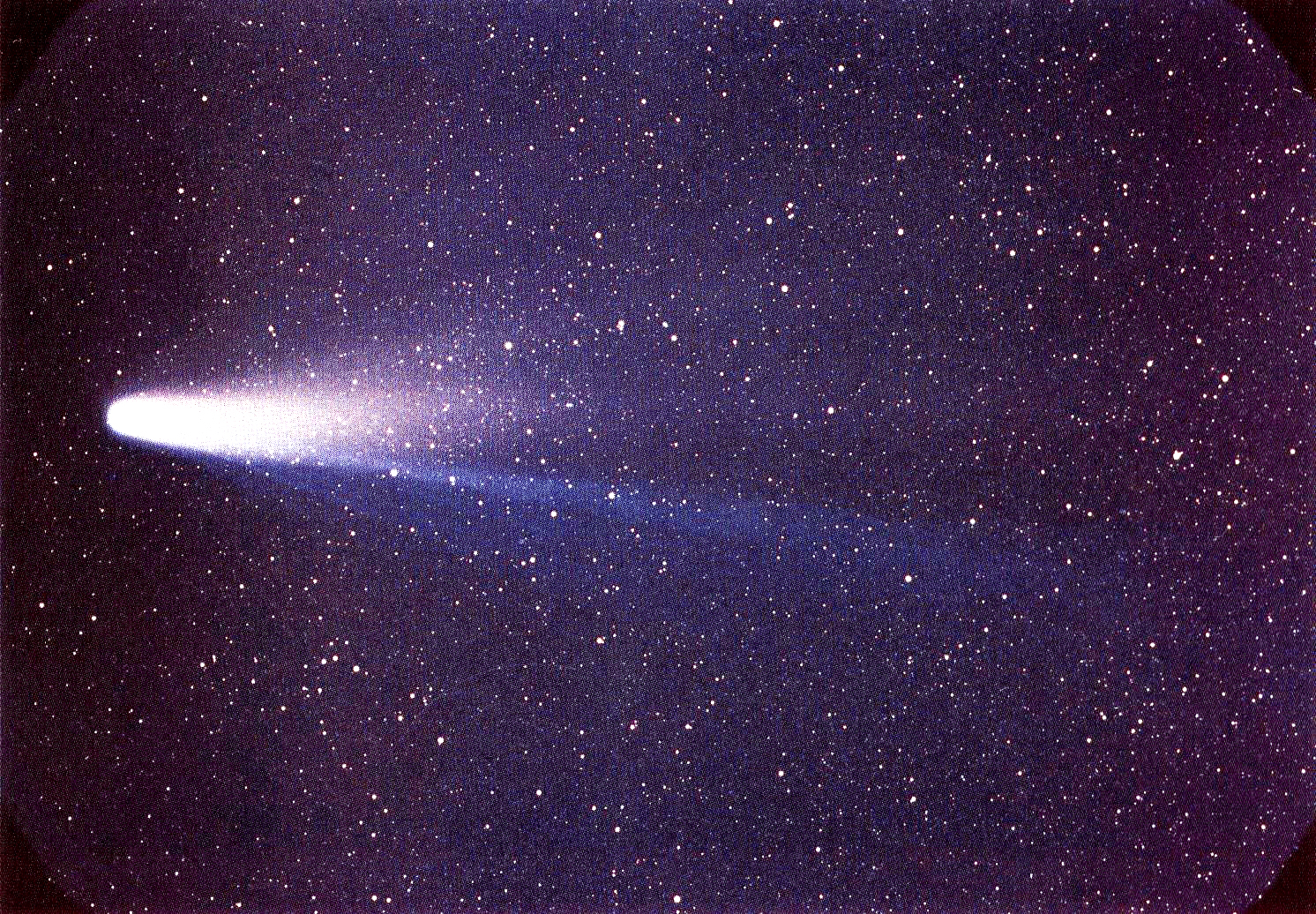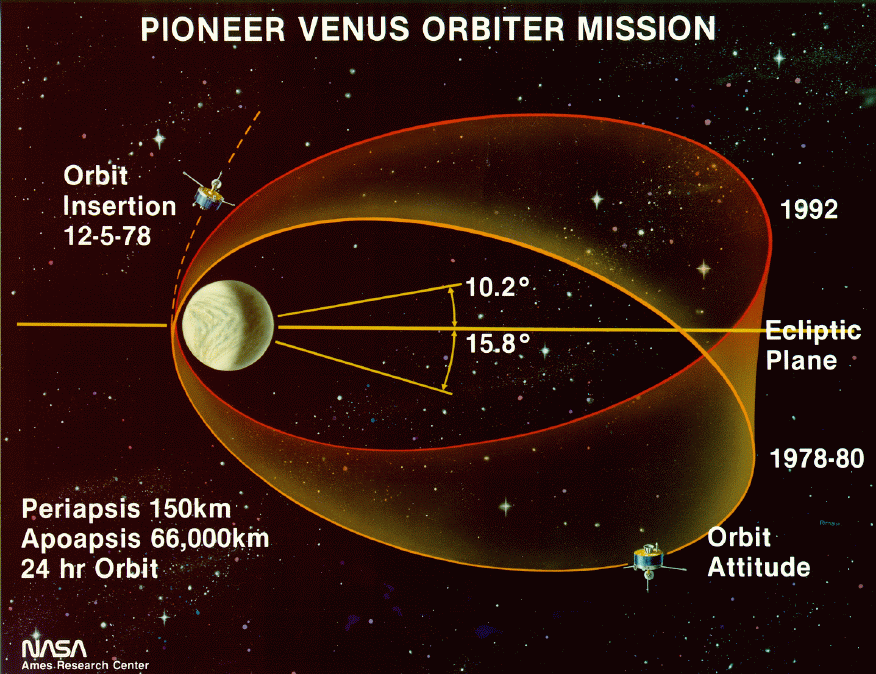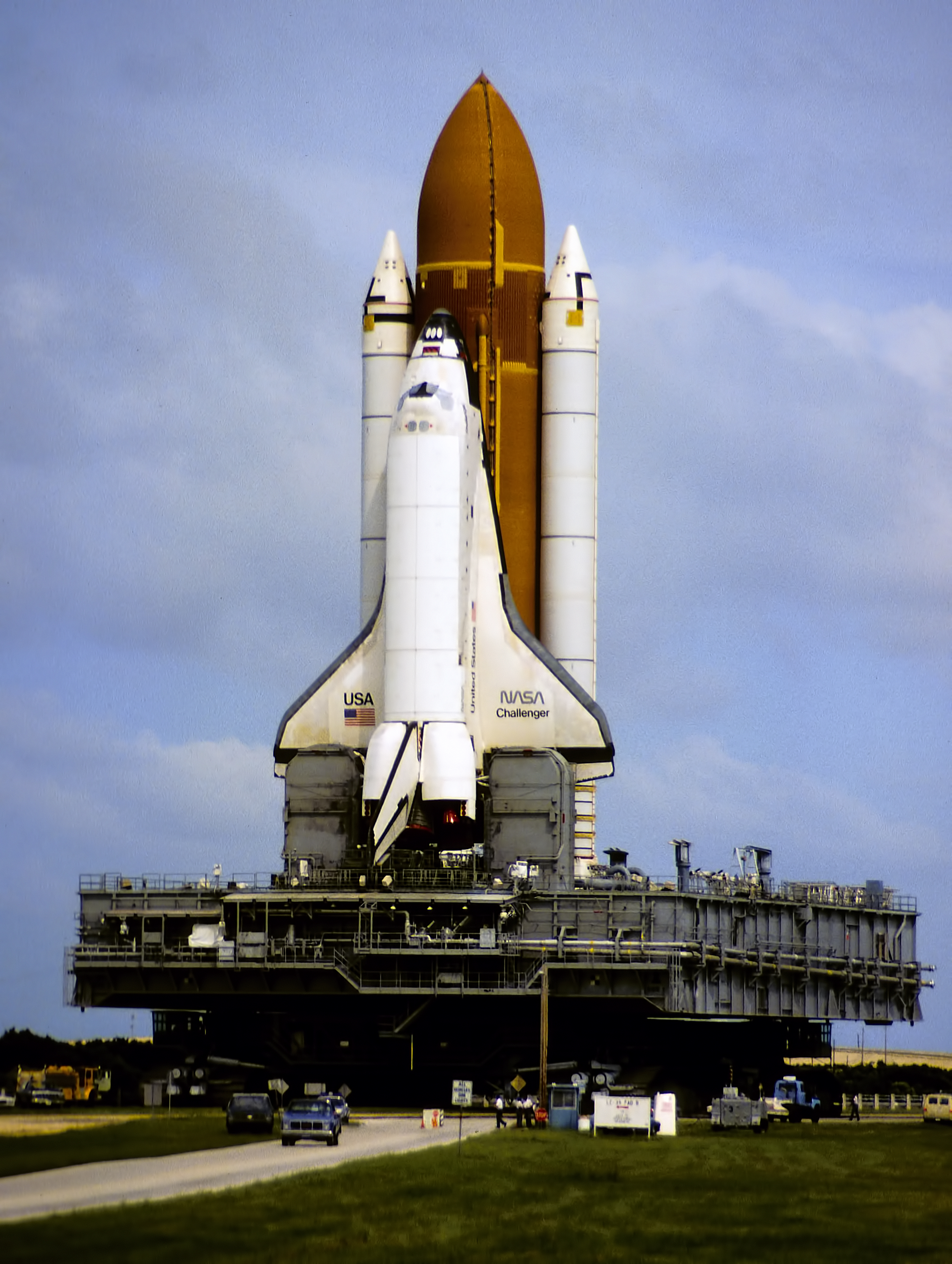|
Halley Armada
The Halley Armada is the name of a series of space probes, five of which were successful, sent to examine Halley's Comet during its 1986 sojourn through the inner Solar System, connected with apparition "1P/1982 U1". The armada included one probe from the European Space Agency, two probes that were joint projects between the Soviet Union and France and two probes from the Institute of Space and Astronautical Science in Japan. Notably, NASA did not contribute a probe to the Halley Armada. Main space probes Probes involved (in order of closest approach): *Giotto (596 km), the first space probe to get close-up color images of the nucleus of a comet. (ESA) *Vega 2 (8,030 km), which dropped a balloon probe and lander on Venus before going on to Halley. (USSR/France Intercosmos) *Vega 1 (8,889 km), which dropped a balloon probe and lander on Venus before going on to Halley. (USSR/France Intercosmos) *Suisei (151,000 km), also known as PLANET-A. Data from Sakigake was used to improve ... [...More Info...] [...Related Items...] OR: [Wikipedia] [Google] [Baidu] |
Pioneer Venus Orbiter
The Pioneer Venus Orbiter, also known as Pioneer Venus 1 or Pioneer 12, was a mission to Venus conducted by the United States as part of the Pioneer Venus project. Launched in May 1978 atop an Atlas-Centaur rocket, the spacecraft was inserted into an elliptical orbit around Venus on December 4, 1978. It returned data on Venus until October 1992. Launch and arrival at Venus The Pioneer Venus Orbiter was launched by an Atlas SLV-3D Centaur-D1AR rocket, which flew from Launch Complex 36A at the Cape Canaveral Air Force Station. The launch occurred at 13:13:00 on May 20, 1978, and deployed the Orbiter into heliocentric orbit for its coast to Venus. Venus orbit insertion occurred on December 4, 1978. Spacecraft Manufactured by Hughes Aircraft Company, the Pioneer Venus Orbiter was based on the HS-507 bus. The spacecraft was a flat cylinder, in diameter and long. All instruments and spacecraft subsystems were mounted on the forward end of the cylinder, except the magnetometer, whi ... [...More Info...] [...Related Items...] OR: [Wikipedia] [Google] [Baidu] |
Missions To Halley's Comet
Mission (from Latin ''missio'' "the act of sending out") may refer to: Organised activities Religion *Christian mission, an organized effort to spread Christianity *Mission (LDS Church), an administrative area of The Church of Jesus Christ of Latter-day Saints *The Christian Mission, the former name of the Salvation Army Government and military *Bolivarian missions, a series of social programs created during Hugo Chávez's rule of Venezuela *Diplomatic mission, a diplomatic outpost in a foreign territory *Military operation *Mission statement, a formal, short, written articulation of an organization's purpose *Sortie or combat mission, a deployment or dispatch of a military unit *Space mission, a journey of craft into outer space Geography Australia * Mission River, Queensland, a locality in the Shire of Cook and the Aboriginal Shire of Napranum *Mission River (Queensland), a river in Australia Canada *Mission, British Columbia, a district municipality *Mission, Calgary, A ... [...More Info...] [...Related Items...] OR: [Wikipedia] [Google] [Baidu] |
Salyut 7
Salyut 7 (russian: Салют-7; en, Salute 7) (a.k.a. DOS-6, short for Durable Orbital Station) was a space station in low Earth orbit from April 1982 to February 1991. It was first crewed in May 1982 with two crew via Soyuz T-5, and last visited in June 1986, by Soyuz T-15. Various crew and modules were used over its lifetime, including 12 crewed and 15 uncrewed launches in total. Supporting spacecraft included the Soyuz T, Progress (spacecraft), Progress, and TKS spacecraft. It was part of the Soviet Union, Soviet Salyut programme, and launched on 19 April 1982 on a Proton (rocket), Proton rocket from Baikonur Cosmodrome Site 200, Site 200/40 at the Baikonur Cosmodrome in the Soviet Union. Salyut 7 was part of the transition from monolithic to modular space stations, acting as a testbed for docking of additional modules and expanded station operations. It was the eighth space station of any kind launched. Salyut 7 was the last of both the second generation of DOS-series spa ... [...More Info...] [...Related Items...] OR: [Wikipedia] [Google] [Baidu] |
Space Station
A space station is a spacecraft capable of supporting a human crew in orbit for an extended period of time, and is therefore a type of space habitat. It lacks major propulsion or landing systems. An orbital station or an orbital space station is an artificial satellite (i.e. a type of orbital spaceflight). Stations must have docking ports to allow other spacecraft to dock to transfer crew and supplies. The purpose of maintaining an orbital outpost varies depending on the program. Space stations have most often been launched for scientific purposes, but military launches have also occurred. Space stations have harboured so far the only long-duration direct human presence in space. After the first station Salyut 1 (1971) and its tragic Soyuz 11 crew, space stations have been operated consecutively since Skylab (1973), having allowed a progression of long-duration direct human presence in space. Stations have been occupied by consecutive crews since 1987 with the Salyut successor M ... [...More Info...] [...Related Items...] OR: [Wikipedia] [Google] [Baidu] |
Soyuz T-15
Soyuz T-15 (russian: Союз T-15, ''Union T-15'') was a crewed mission to the Mir and Salyut 7 space stations and was part of the Soyuz programme. It marked the final flight of the Soyuz-T spacecraft, the third generation Soyuz spacecraft, which had been in service for seven years from 1979 to 1986. This mission marked the first time that a spacecraft visited, and docked with, two space stations in the same mission. Crew Backup crew Mission parameters * Mass: 6850 kg * Perigee: 331 km * Apogee: 366 km * Inclination: 51.6° * Period: 91.5 minutes Mission highlights Soyuz T-15 was both the first expedition to Mir and the last to Salyut 7. Flight to Mir Due to the pressure of launching Mir in time for the 27th Communist Party Congress, mission planners were left without the newer Soyuz-TM spacecraft or any of the planned modules to launch to the station at first. It was decided to launch an older Soyuz-T as Soyuz T-15 on a dual mission to both Mir a ... [...More Info...] [...Related Items...] OR: [Wikipedia] [Google] [Baidu] |
STS-61-E
STS-61-E was a NASA Space Shuttle mission planned to launch on 6 March 1986 using ''Columbia''. It was canceled after the ''Challenger'' disaster. Crew Mission objectives ''Columbia'' was to carry the ASTRO-1 observatory, which would be used to make astronomical observations including observations of Halley's Comet. ASTRO-1 consisted of three ultraviolet telescopes mounted on two Spacelab pallets, controlled by the Instrument Pointing System (IPS) which was first tested on STS-51-F. After the ''Challenger'' disaster, the flight was remanifested as STS-35 and several crew members were replaced. Both Richards and Leestma were reassigned to STS-28 while McBride left NASA in 1989. Vance D. Brand replaced McBride as the commander while Guy S. Gardner and John M. Lounge replaced Richards and Leestma, respectively. See also * Canceled Space Shuttle missions * STS-35 STS-35 was the tenth flight of Space Shuttle ''Columbia'', the 38th shuttle flight, and a mission ... [...More Info...] [...Related Items...] OR: [Wikipedia] [Google] [Baidu] |
Canceled Space Shuttle Missions
During NASA's Space Shuttle program, several missions were canceled. Many were canceled as a result of the ''Challenger'' and the ''Columbia'' disasters or due to delays in the development of the shuttle. Others were canceled because of changes in payload and mission requirements. Canceled due to the late development of the Space Shuttle In 1972, NASA's planners had projected for 570 Space Shuttle missions between 1980 and 1991. Later, this estimate was lowered to 487 launches between 1980 and 1992. The details of the first 23 projected missions, listed in the third edition of ''Manned Spaceflight'' (Reginald Turnill, 1978) and the first edition of the ''STS Flight Assignment Baseline'', an internal NASA document published in October 1977, are presented below. Later in the development process, NASA suggested using the first manned Space Shuttle mission, STS-1, as a sub-orbital test of the Return to Launch Site (RTLS) flight profile devised for emergency abort scenarios. ... [...More Info...] [...Related Items...] OR: [Wikipedia] [Google] [Baidu] |
Space Shuttle Challenger Disaster
On January 28, 1986, the broke apart 73 seconds into its flight, killing all seven crew members aboard. The spacecraft disintegrated above the Atlantic Ocean, off the coast of Cape Canaveral, Florida, at 11:39a.m. Eastern Time Zone, EST (16:39 Coordinated Universal Time, UTC). It was the first fatal accident involving an List of space programs of the United States, American spacecraft in flight. The mission, designated STS-51-L, was the tenth flight for the Space Shuttle orbiter, orbiter and the twenty-fifth flight of the Space Shuttle fleet. The crew was scheduled to deploy a communications satellite and study Halley's Comet while they were in orbit, in addition to taking school teacher Christa McAuliffe into space. The latter resulted in a higher than usual media interest and coverage of the mission; the launch and subsequent disaster were seen live in many schools across the United States. The cause of the disaster was the failure of the two O-ring seals in a joint in ... [...More Info...] [...Related Items...] OR: [Wikipedia] [Google] [Baidu] |
STS-51L
STS-51-L was the 25th mission of the NASA Space Shuttle program and the final flight of Space Shuttle ''Challenger''. Planned as the first Teacher in Space Project flight in addition to observing Halley's Comet for six days and performing a routine satellite deployment, the mission never achieved orbit; a structural failure during its ascent phase 73 seconds after launch from Kennedy Space Center Launch Complex 39B on January 28, 1986, killed all seven crew members —Commander Francis R. "Dick" Scobee, Pilot Michael J. Smith, Mission Specialists Ellison S. Onizuka, Judith A. Resnik and Ronald E. McNair, and Payload Specialists Gregory B. Jarvis and S. Christa McAuliffe—and destroyed the orbiter. Immediately after the disaster, President Ronald Reagan convened the Rogers Commission to determine the cause of the explosion. The failure of an O-ring seal on the starboard Solid Rocket Booster (SRB) was determined to have caused the shuttle to break up in flight. Space Shu ... [...More Info...] [...Related Items...] OR: [Wikipedia] [Google] [Baidu] |
STS-51-L
STS-51-L was the 25th mission of the NASA Space Shuttle program and the final flight of Space Shuttle ''Challenger''. Planned as the first Teacher in Space Project flight in addition to observing Halley's Comet for six days and performing a routine satellite deployment, the mission never achieved orbit; a structural failure during its ascent phase 73 seconds after launch from Kennedy Space Center Launch Complex 39B on January 28, 1986, killed all seven crew members —Commander Francis R. "Dick" Scobee, Pilot Michael J. Smith, Mission Specialists Ellison S. Onizuka, Judith A. Resnik and Ronald E. McNair, and Payload Specialists Gregory B. Jarvis and S. Christa McAuliffe—and destroyed the orbiter. Immediately after the disaster, President Ronald Reagan convened the Rogers Commission to determine the cause of the explosion. The failure of an O-ring seal on the starboard Solid Rocket Booster (SRB) was determined to have caused the shuttle to break up in flight. Space Sh ... [...More Info...] [...Related Items...] OR: [Wikipedia] [Google] [Baidu] |
Space Shuttle Challenger
Space Shuttle ''Challenger'' (OV-099) was a Space Shuttle orbiter manufactured by Rockwell International and operated by NASA. Named after the commanding ship of a nineteenth-century scientific expedition that traveled the world, ''Challenger'' was the second Space Shuttle orbiter to fly into space after '' Columbia'', and launched on its maiden flight in April 1983. It was destroyed in January 1986 soon after launch in an accident that killed all seven crewmembers aboard. Initially manufactured as a test article not intended for spaceflight, it was utilized for ground testing of the Space Shuttle orbiter's structural design. However, after NASA found that their original plan to upgrade ''Enterprise'' for spaceflight would be more expensive than upgrading ''Challenger'', the orbiter was pressed into operational service in the Space Shuttle program. Lessons learned from the first orbital flights of ''Columbia'' led to ''Challenger''s design possessing fewer thermal protectio ... [...More Info...] [...Related Items...] OR: [Wikipedia] [Google] [Baidu] |






